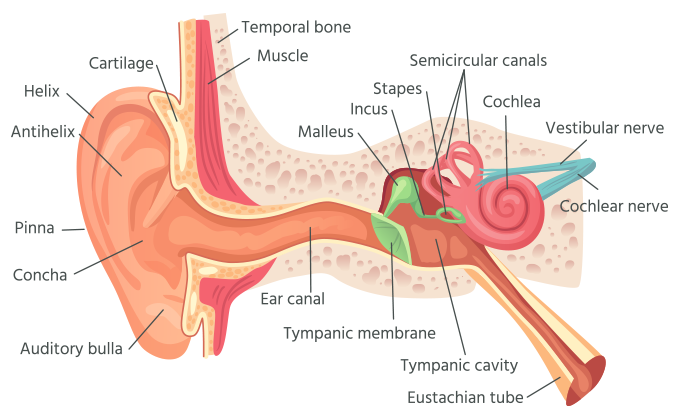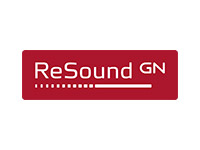
- Mar 3, 2020
Localisation - identifying where sound comes from
Have you ever had trouble locating a sound? Maybe your phone in another room?
Your hearing plays a large role in how you detect and locate sounds, called localisation.
Interaural Time Difference ITD
Interaural time difference is the difference in arrival time of a sound between two ears.
It provides clues for direction and angle of the sound source.
This is the difference in timing that it takes for sound to reach one ear and then reach the other ear.
So someone is talking to you from your righ-side the sound will arrive to your right ear quicker and louder than your left ear.
The difference in timing, tells your brain that that sound is coming from that direction.
Interval Level Differences ILDS
This is the difference in intensity of sound between your ears caused by the head shadow effect and distance.
The head shadow effect is a phenomenon that happens when sound has to travel through and around your head before it can be heard by your opposite ear.
It is typically six to seven decibels softer than it was in the ear, that was on the side of the sound source. Thus this effect helps your brain locate the source of the sound.
Musicians learn interval ear training to help differentiate and seperate notes Can those skills be used to differentiate voices in noisy environments like an airport?

Two Functioning Ears
Two functioning ears are required to be able to determine where sound is coming from.

Pinna Effects
People with normal hearing are really good at identifying where sound is coming from, in the horizontal plane, and they're also really good at identifying where sound is coming from, in the vertical plane.
If you actually have something in your vertical plane that is completely centered with your head, you're not going to have a whole lot of timing, or level differences between both of your ears.
This is where the unique size and shape of your Pinna (the visible part of the ear) comes into play.
The shape of your Pinna is something that helps you identify where in your vertical plane sound is coming from and your brain is attuned to this over your lifespan.
There is an easy way to demonstrate this if you can actually get a friend to jingle a set of car keys, it's somewhere in your vertical plane with your eyes closed, you can usually identify very accurately where thatsound is coming from, but if you actually take your ears and contort them and kind of squish them around and then try to do the same thing, it becomes increasingly difficult to understand where in your vertical plane that sound is coming from.
Are you having trouble identifying sound?
If you're having issues in identifying where sound is actually coming from then you absolutely have to go in and get your hearing assessed, because that is what is controlling your ability to actually perform localisation.
Tags
Other Articles
16/04/2025 The ear is the gateway to your life »
11/08/2024 Phonak Audeo Sphere Infinio Hearing Aids »
04/06/2024 The Science of Signal-to-Noise Ratio »
05/12/2023 Understanding Body Language In Meetings »
21/11/2023 Slim Hearing Aids »
18/06/2023 Noise and non-hearing health »
12/06/2023 Using Conversation Visual Cues »
03/01/2023 A beginner's guide to Bluetooth »
08/12/2022 The Stigma of Wearing Hearing Aids »
16/08/2022 How to Become a Better Listener »
13/05/2022 Negativity Bias »
22/04/2022 Tinnitus who has it and why? »
14/10/2021 Lost or Damaged Hearing Aids »
20/10/2020 Deep Listening »
08/10/2020 Over-the-Counter hearing aids »
08/09/2020 Hear Better than Anyone in the Room »
12/08/2020 Sound Wavelength and Loudness »
10/02/2020 Sudden Deafness »
17/12/2019 Hearing Better in Meetings »
09/12/2019 Can meditation improve hearing? »
18/11/2019 Over 50s »
30/10/2019 Wireless Hearing Aids »
07/10/2019 Cleaning and Maintaining Hearing Aids »
09/04/2019 What is the process for buying a hearing aid? »
06/02/2019 One Hearing Aid or Two? »
31/01/2019 Hearing Aid Cost Breakthrough 2019 »
29/08/2017 Hearing Aid Future is Here »
09/06/2017 ABC Checkout Warns on Hearing Aid Purchases »
13/04/2017 Listening better in a noisy world »
21/02/2017 Hearing augmentation devices - IQBuds »
08/12/2016 Childrens Hearing Linked to Social Disadvantage »
24/10/2016 Hearing with Less Effort »
25/01/2016 Seven Thousand Ways to Listen »
01/10/2015 Hearing Loss and Dementia »
06/03/2015 Myth: Hearing Aids do not work »
03/12/2014 ABC Background Briefing Hearing Aids »
20/11/2014 Buying a hearing aid for your parents »
17/01/2014 Is Bluetooth making costly Hearing Aids redundant? »
13/01/2014 Research Online and Save »
08/10/2013 Phonak Q10 Hearing Aid Review »
13/05/2013 Is anyone listening to you »
12/04/2013 Hearing Aid Repairs »
05/04/2013 Will I benefit from a hearing aid? »
18/03/2013 Compare Hearing Aids »
13/03/2013 Audiologists are now mobile »
08/03/2013 Hearing and your work prospects »
18/12/2012 Hearing and your baby »
13/12/2012 Occlusion effect when wearing hearing aids »
24/10/2012 Hearing Aid Brands in Australia »
18/10/2012 ReSound Verso »
03/10/2012 Waterproof Hearing Aids »
28/05/2012 Music to your ears »
19/02/2012 Donate hearing aids that are no longer needed »
31/01/2012 An Invisible Hearing Aid »
26/11/2011 Who to see for sudden hearing loss »
03/11/2011 Restore your hearing or use aids »
13/09/2011 Not wearing your hearing aids »
29/08/2011 Audiologists Career Path »
26/08/2011 Bluetooth Hearing Aids »
Hearing Aid Referral
Get the best price and care from our network of professionals
FREE/no obligation
- Great Care
- Major Brands
Hearing Aid Brands in Australia









